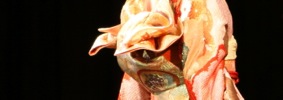Former Contestants
Photos courtesy of the Honolulu Japanese Junior Chamber of Commerce
Contestant group photos, Contestant names in alphabetical order by maiden name, Cherry Blossom Festival General Chair names and Honolulu Japanese Junior Chamber President names have been archived. See cooresponding Festival page for photos provided courtesty of the Honolulu Japanese Junior Chamber of Commerce. If you find inaccurate information, please email us.
History of the Festival
In 1953, the Honolulu Japanese Junior Chamber of Commerce (HJJCC) introduced the first annual Cherry Blossom Festival. In its inaugural year, 72 young Japanese-American women participated. Today, the Cherry Blossom Festival is one of the longest, continually running ethnic festivals in the State of Hawaii. Over the past 59 years, the Cherry Blossom Festival has touched the lives of nearly 1,000 Contestants. While times have evolved, the purpose of the Festival continues to be to perpetuate Japanese culture, and to enrich the lives of young women of Japanese ancestry.
Milestone Events
1949
Inspired by the Nisei Week Japanese Festival in Los Angeles, the HJJCC begins organizing the Hawaii Cherry Blossom Festival.
|
1953 (1st)
After four years of planning, the 1st Cherry Blossom Festival is held with 72 Contestants.
|
1954 (2nd)
The perpetual Queen's crown is donated by Pan-American World Airways. The perpetual crown was used until the 20th Festival.
|
1955 (3rd)
The perpetual Queen's scepter adorned with Mikimoto pearls is donated by Japan Airlines. The perpetual scepter is still used today. Also, it was the first year a Miss Congeniality title was awarded.
|
1971 (19th)
The title "1st Runner up" was changed to "Princess" and subsequent "Runner up" titles were changed to "Attendant" in the 19th Festival.
|
1974 (22nd)
The 22nd Cherry Blossom Festival Goodwill Tour is the first to be honored with a meeting with a member of the Japan Imperial Family.
|
1984 (32nd)
The Cherry Blossom Festival Queen Pageant was shown live on cable TV, presented by NGN and Oceanic Cable.
|
1985 (33rd)
A high school essay contest is held for the first time during the 33rd Festival. The essay contest continues to exist today.
|
1992 (40th)
Lenny Yajima (34th) Andrew becomes the first female General Chair in the history of the Festival. Her father, Tad Yajima, was the General Chairman of the 4th Festival.
|
1993 (41st)
The title "Princess" was changed to "1st Princess" and "Attendant" was changes to "Princess" in the 41st Festival.
|
1997 (45th)
The number of cultural classes offered to Contestants is expanded. Today, Contestants participate in more than 10 cultural classes.
|
1999 (47th)
Women of less than 100 percent Japanese ethnicity are allowed to participate for the first time. Also, the Queen Pageant and Coronation Ball were combined for the first time into one event, Festival Ball.
|
2000 (48th)
Vail Matsumoto is the first Queen of less than 100 percent Japanese ethnicity in the 48th Festival.
|
2001 (49th)
Catherine Toth is the first Queen without a Japanese surname in the 49th Festival. Also, the 1st Violet Niimi Scholarship Award was created by Dr. Scott Oishi, and the 1st Cultural Award was created by Mrs. Lillian Yajima.
|

